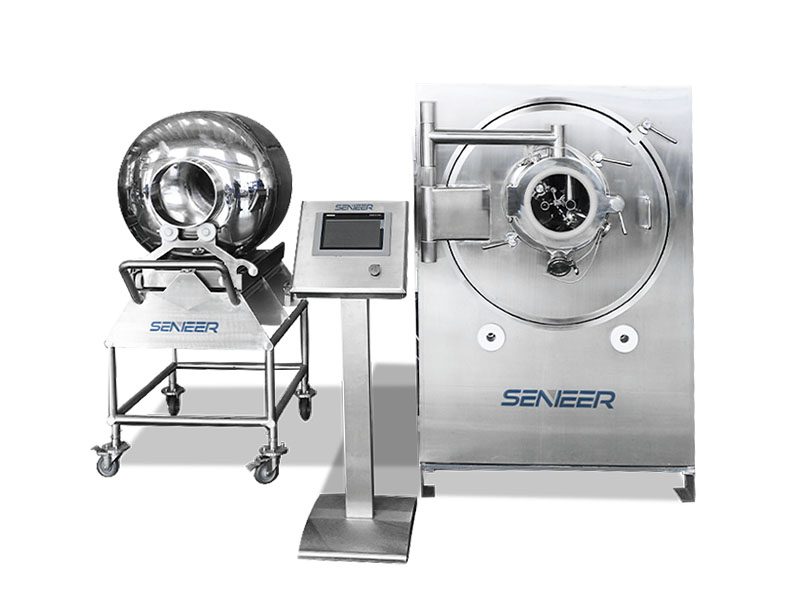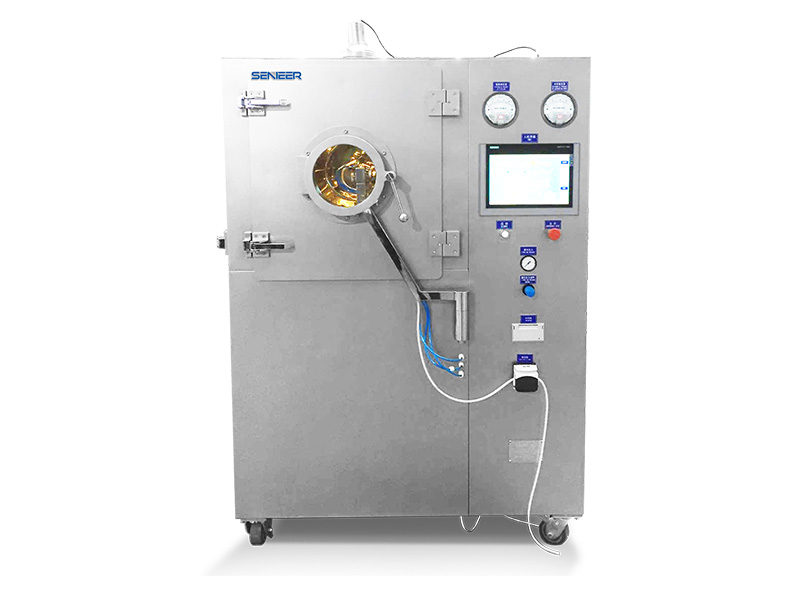Nowadays, coating has become an important part of tablet and pellet production – however, there are still some problems in coating applications that have not been fully solved, and some have even been taken for granted, although they are almost every All will have varying degrees of impact on the coating process and bring certain economic losses. Although many people have assumed that these problems lack feasible solutions, in fact solutions exist and are being developed very smoothly. A new generation of tablet coating machines is addressing these old challenges in an innovative way.
The existing challenges in coating basically come from three aspects: the quality of the coating result (i.e. the quality of the final product), productivity and the flexibility of the tablet coating machine.
Quality: How To Continuously Ensure High-Quality Coating Results?

When considering product quality, the first thing that comes to mind is defect prevention—cosmetic defects, such as discoloration, color differences between tablets, or tablet score bridging; and functional defects, such as cracked films, broken tablets , chipping or surface erosion. Pure cosmetic defects are tolerated by fashion, but once there are functional defects, the entire batch of products will be at risk. Depending on the product, it has the potential to cost as much as six figures. So all pharmaceutical companies are trying to solve this problem, and each company has its own response. Although these measures differ in detail, the ultimate goal is to stabilize the coating process by regularly checking parameters and making adjustments when necessary. Currently, a common way to increase and simplify this process control is to improve technical feedback, that is, to study how well and quickly technical systems can provide feedback to operators about process and product quality. Once feedback is received, it is the operator’s responsibility to respond accordingly. This is certainly an effective solution, but is it enough to achieve true process stability?
In fact, there are relatively large flaws and uncertainties in this method, because in this method, the adjustment and optimization of the coating process completely depend on the operator’s expertise, experience and ability level. What if there happens to be a shortage of skilled workers in the labor market and there are no suitable skilled operators? What if the expert retires or goes on leave and there is no suitable replacement? What if you only have one suitable operator and no one is working a shift, but you need to run a coating production of 20 hours or more? All this and more like it aside, getting the ideal coating result and keeping track of all the parameters is no easy task even for the most experienced operator, especially if the batch size of the product will Changes and coating processes are complex or very demanding (such as being very sensitive to humidity or temperature), making the whole thing even more difficult.
The solution to this uncertainty is to adopt a more automated coating process. Excellent automated coating should not only be able to control relevant parameters and provide feedback to the operator, but also be able to make fully automatic adjustments. Of course, the coating process still requires an operator with specialized knowledge, and manual intervention is also possible. However, the almost complete automation of the coating process ensures that the operator does not need to be an expert to achieve consistent high-quality products through this technology, which is somewhat similar to the self-driving program in a car. What does this self-regulating coating process look like? This article will describe it in detail when talking about the second important issue next. In fact, automation is also the preferred means of optimizing productivity.
Productivity: How Can The Coating Process Be Made More Resource- And Cost-Effective And Sustainable?
For a long time, the productivity shortcomings in the coating process have been regarded as a certain fact to some extent. In particular, the waste of coating liquid has become a widely tolerated defect and is not uncommon: in packaging, For a product, the planned amount of coating liquid is often 50% more than theoretically required because losses of up to 40% are considered normal. For “standard” coatings, this may not mean any significant financial loss, but for functional coatings, such as coatings with active pharmaceutical ingredients (APIs) or controlled release coatings, the situation is completely different ( The unit price of these functional coating materials or APIs is much higher than ordinary film coating materials). However, even standard coating has the hidden cost of cleaning and handling fees, not to mention logistics costs because if more coating solution is needed, more coating solution must be transported and stored. In addition to this, given the rising global awareness of sustainable development and corresponding legal regulations, this form of “waste of resources” and the resulting “environmental impact” is no longer an appropriate option in the long run. Pharmaceutical companies must react now or be left behind.
Flexibility: How Can You Be Fully Prepared For Changing Industry Trends, Markets And Customer Needs?
Almost everyone engaged in coating production will sooner or later encounter the challenge of scaling up and downsizing due to some situation. Specifically, the main situations include the following:
(1) When producing drugs for different countries, the batch size must be changed according to different market requirements;
(2) When verification is required because subsequent batches are only produced at 10% of the previous batch;
(3) When producing under a CXO contract, a very wide range of batch sizes must be processed;
(4) When transitioning from laboratory to production scale;
(5) When market demand changes over time.
Point 5 is often overlooked when purchasing coatings and other pharmaceutical equipment, even though it is very important. After all, it is not uncommon for high-quality production equipment to have a life cycle of more than 20 years, and market requirements will almost inevitably change over such a long period of time. So, for all coating suppliers, the ability to scale up is essentially a future-proofing capability.
So what are the difficulties for pharmaceutical companies in scaling up and down? Firstly, this means that the company needs at least two machines, one for producing small batches and another for producing large batches, since most coating machines do not have a large enough batch range. Normally, the batch size of a coating machine can only be reduced to 40% of the maximum batch size. Scaling up and down therefore requires companies to purchase multiple pieces of equipment, which means very high investment costs, energy consumption and space requirements. Furthermore, process parameters cannot simply be transferred from one machine to another – even if they are the same brand and model. Therefore, a relatively large number of manual adjustments must also be made, and the question arises of how to ensure high quality and uniformity of all products in the presence of different equipment and batch sizes. At the same time, when manually adjusting, a lot of work also means more time is required.
Another challenge in coating flexibility is how to change the coating medium (coating solution) itself without major technical changes. Some production companies may require this. For example, the coating solution will likely need to be reformulated as ingredients in the formula are about to be banned, such as titanium dioxide, which is already banned in food production in the EU. Many companies are currently looking for a suitable alternative, and the same applies to pharmaceutical production. There is a current trend toward using more natural ingredients in coating solutions, such as abandoning alcohol in favor of water-based solvents, which may also require modifications to the formulation.

Automated parameter adjustment also shows advantages in this regard. In the search for new recipes, experts can concentrate on formula research and leave other work to machines. In addition, because the process time is shorter after using automation, experts can conduct more formula tests within a certain period of time, and the research and development efficiency has also been further improved. If a water-based coating solution is used, how to save time will be a big problem, because the drying stage of the water-based coating solution is longer. In this case, it is particularly important to carry out the best possible drying, since excessive humidity is one of the main factors causing product defects.
Conclusion And Outlook
When it comes to coating, there is great potential for optimization by implementing a higher degree of automation. Shorter process times, consistently high product quality, time and cost savings, and resource savings are just some of the benefits. Over the next few years, many new products will be developed by recombining known APIs or new drug delivery formats, and coatings will play a central role in such applications. In the future there will be more products containing active ingredients in coatings, and more companies will be coating products that typically could not be coated in the past. One of the prerequisites for pioneering these innovative developments is automation technology that stabilizes the coating process, making coating more efficient and sustainable.










